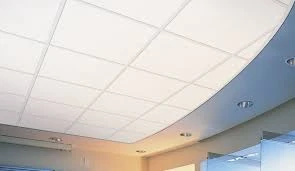- Afrikaans
- Albanian
- Amharic
- Arabic
- Armenian
- Azerbaijani
- Basque
- Belarusian
- Bengali
- Bosnian
- Bulgarian
- Catalan
- Cebuano
- Corsican
- Croatian
- Czech
- Danish
- Dutch
- English
- Esperanto
- Estonian
- French
- German
- Greek
- Hindi
- Indonesian
- irish
- Italian
- Japanese
- Korean
- Lao
- Malay
- Myanmar
- Norwegian
- Norwegian
- Polish
- Portuguese
- Romanian
- Russian
- Serbian
- Spanish
- Swedish
- Thai
- Turkish
- Ukrainian
- Uzbek
- Vietnamese
Sep . 19, 2024 08:41 Back to list
pvc vs gypsum ceiling
PVC vs. Gypsum Ceiling A Comparative Analysis
When it comes to choosing the right ceiling material for your home or office, PVC and gypsum are two popular options that come into play. Each material has its own advantages and disadvantages, which can significantly impact the aesthetic, functionality, and overall cost of a project. Understanding the differences between PVC and gypsum ceilings can help homeowners and builders make informed decisions.
Material Composition and Properties
PVC, or polyvinyl chloride, is a synthetic plastic polymer. It is lightweight, durable, and resistant to moisture, making it an ideal choice for areas prone to high humidity, such as bathrooms and kitchens. PVC ceilings come in various colors, designs, and finishes, allowing for great flexibility in interior design.
Gypsum, on the other hand, is a naturally occurring mineral that is used to create gypsum boards, also known as drywall. Gypsum ceilings provide a smooth, elegant surface that can be easily painted or decorated. Unlike PVC, gypsum is non-combustible, providing a degree of fire resistance that is highly valued in building codes.
Installation Process
When it comes to installation, PVC ceilings are generally easier and quicker to install. They typically come in panels or tiles that can be directly fixed to the existing ceiling framework. This can result in lower installation costs and less labor.
pvc vs gypsum ceiling

Gypsum ceilings, however, require a more complex installation process. They need to be mounted to a framework of metal or wooden studs. The installation often involves cutting boards to fit the space and applying joint compound to seams, followed by sanding and painting. This longer installation process can increase labor costs but may yield a more seamless finish.
Cost Considerations
In terms of cost, PVC ceilings usually come with a lower upfront price than gypsum ceilings. However, the long-term costs must also be considered. PVC is durable and resistant to moisture and pests, which can reduce maintenance and replacement costs over time. Gypsum ceilings may need repairs or replacements if exposed to excessive moisture, leading to potential additional expenses.
Aesthetic Appeal
Aesthetically, both materials have their unique benefits. PVC ceilings offer a modern look with a variety of textures and colors, making them suitable for contemporary designs. They are particularly effective in creating a vibrant atmosphere with their glossy finishes. Gypsum ceilings lend themselves to a classic, sophisticated appearance. They can be easily molded into intricate designs, adding elegance and depth to a room.
Conclusion
Ultimately, the choice between PVC and gypsum ceilings comes down to the specific needs and preferences of the homeowner or builder. For those seeking an affordable, moisture-resistant option with modern aesthetics, PVC might be the better choice. In contrast, if a sophisticated look and fire resistance are priorities, gypsum ceilings could be more appropriate. By weighing the pros and cons of each option, individuals can find the perfect ceiling material that meets both their functional and aesthetic needs.
-
Transform Interiors with PVC Gypsum Ceiling: A Stylish, Durable, and Moisture-Resistant SolutionNewsMay.19,2025
-
The Smart Interior Upgrade: Discover the Durability and Versatility of Gypsum Ceiling Access Panel SolutionsNewsMay.19,2025
-
The Smart Choice for Interior Design: Discover the Value of PVC Gypsum Ceiling SolutionsNewsMay.19,2025
-
Mineral Fiber Ceiling Tiles: The Smart Blend of Performance and AestheticsNewsMay.19,2025
-
Mineral Fiber Ceiling Tiles: The Superior Choice Over Gypsum for Sound and Fire SafetyNewsMay.19,2025
-
Mineral Fiber Ceiling Tiles: Eco-Friendly Strength and Style for Every CeilingNewsMay.19,2025







